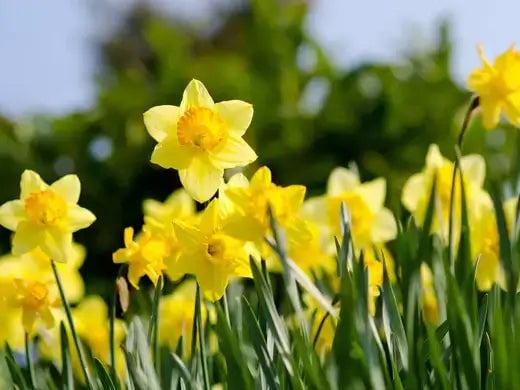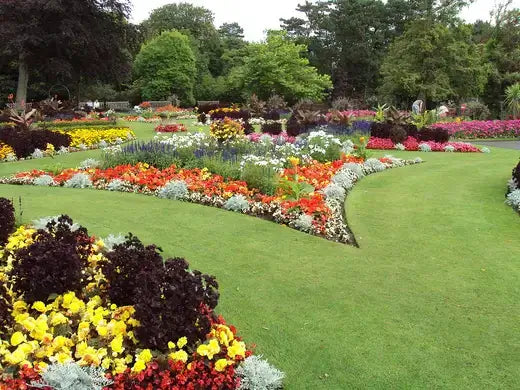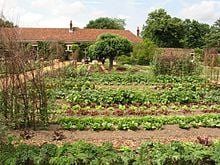It is always the best time to grow vegetables in your garden, provided all the plants get the basic requirements, like soil, water, sun, and nutrients.
You can always turn your backyard into a beautiful vegetable garden. However, the varieties you want to grow to depend on the climatic conditions and the type of soil.
This small guide can help you decide what plants to grow during a specific season.
Let us start at the beginning of a New Year. During this time of the year, it is mid-winter. The best vegetables to grow during January-February are Mustards, Potatoes, Peas, Radish, Cauliflower, Lettuce, Celery, Tomatoes, Carrots, etc. These are a few vegetables that can be grown during the mid-winter season. Few of these vegetables are ready to be consumed as soon as March arrives. Apart from vegetables, you can also grow herbs like Parsley, Cardamom, Chives, Mint, Coriander, and many more.
As winter ends, i.e., towards the end of March, it is spring, and most plants start blooming and producing fruits. In this season, you can consider growing vegetables like Eggplants, Squash, Cucumbers, Cantaloupes, Peppers, Beans, etc., and also herbs like Marjoram, Sage, Basil, Thyme, Mint, Comfrey, etc. for the next quarter.
In June, summertime, you can go ahead and plant vegetables like Spinach, Okra, Collards, Sweet Potatoes, Cherry Tomatoes, etc. Herbs can also be grown during this season; some herbs you can try growing are Oregano, Savory, Rosemary, Anise, Marjoram, Basil, etc.
From September to December, a few vegetables you can plant are Onions, Beets, Broccoli, Turnips, Radish, Carrots, Sweet Potatoes, Cabbage, Spinach, etc. In your kitchen garden, you can also plant aromatic herbs like Lavender, Garlic, Dill, Fennel, Sage, Marjoram, etc., in this quarter.
These vegetables can be grown in your backyard to enjoy fresh vegetables and herbs throughout the year. You can prepare many delicious dishes using homegrown veggies and flaunt your skills in front of the guests.
A few varieties are seasonal and should be grown in a particular season to thrive well. You can get more information on different varieties from a local nursery. They can help you choose the best ones for your home garden.
Companion Planting: The Best Allies for Every Vegetable Season
Companion planting pairs different plant species together to obtain mutual advantages and represents a traditional gardening technique. Selecting appropriate companion plants for your vegetables leads to better soil conditions while helping to keep pests away and improving taste. In this section, you will identify the ideal companion plants to grow alongside your vegetables each season and understand their beneficial effects.
Spring Planting
Companion plants enhance the growth of cool-season vegetables such as lettuce, peas, spinach, kale, and radishes by warding off early-season pests. Marigolds perform best during spring because their potent smell keeps nematodes and aphids away. The mild onion scent of chives serves as a pest deterrent, particularly around lettuce and spinach plants. Nasturtiums serve as "trap crops" because their peppery leaves attract pests, which protects more susceptible greens. Borage brings beneficial pollinators to gardens early in the year, which helps peas achieve strong pod growth through adequate pollination.
Summer Planting
Tomatoes, peppers, cucumbers, squash, beans, and eggplants require deep soil nutrients and plenty of sunlight during summer. Tomatoes benefit from being planted with basil because it enhances their flavor while repelling flies and mosquitoes. Beans increase soil fertility through nitrogen fixation, which benefits neighboring cucumbers, tomatoes, and peppers. Marigolds maintain their ability to repel pests throughout the summer by keeping whiteflies and insects away. The tiny flowers of oregano and thyme attract beneficial pollinators, while these herbs drive away cabbage moths and similar pests. The aromatic herbs planted next to peppers and eggplants increase yields and protect against pests.
Fall Planting
During the fall, cool-weather vegetables like broccoli, cabbage, cauliflower, and Brussels sprouts become the main crops in gardens. Garlic planting in late fall serves as an effective deterrent against spider mites and Japanese beetles because of its potent smell. As a pungent perennial herb, Sage defends brassicas from numerous insects, including the cabbage moth. Despite its invasive tendencies, mint is a natural deterrent for ants, fleas, and rodents when grown in containers alongside fall lettuces and cabbages. The "pot marigold" known as Calendula attracts ladybugs, which eat aphids and protect autumn crops. The vibrant calendula flowers bring lively color to the garden when temperatures cool.
Choosing appropriate plant companions throughout the growing seasons will enhance soil health while protecting crops from pests and strengthening garden vitality. By integrating traditional gardening knowledge with current techniques, these pairing approaches deliver year-round harvest optimization using an environmentally conscious approach.
Read more

Sunday, April 10As per the taxonomy of daffodil bulbs, they belong to the genus Narcissus.These plants are primarily grown for their unique flowers that can beautify any landscape.The flowers are f...

Living Art- How to Choose Colors in a Garden Choosing colors for a garden should be fun, not work. However, with so many choices, a person can become easily confused. Coordinating flowers is about ...


